Imagine enjoying a nice book while curled up on the saloon sofa and having to hear brrrrrrrrrrrip every twenty minutes? Consider what it’s like when you finally start to drift off to sleep and the low murmur of brrrrrrrrrip echos through the boat?
For several months I’ve been enduring the annoying sound of brrrrrrrrrip throughout the day and night. When the problem first started we assumed that a tap was running or there was a small leak somewhere along our fresh water supply.
We spent hours looking for leaks and inspecting our water outlets
In the full spectrum of things, our intermittent fresh water pump was regarded as ‘annoying’ rather than ‘critical.’ We’ve had other fires to put out recently – mainly getting our Perkins engine and Westerbeake generator pulled apart, serviced and put back together.
The water pump was added to the long list of things we wanted to figure out or fix…eventually.
When the time finally came to discuss our epidemic brrrrrrrrrrip sound with a marine services chap can you believe that he discovered the solution in a matter of three minutes.
Yes – we lived with a massive annoyance that took one person three minutes to diagnose!
Now that the problem has been eradicated I can still hear echo’s of the brrrrrrrrrip in my mind. Our 56’ sailboat is too quiet now. (Yes…I am joking!)
Hopefully you’ll read this article and learn from our lessons rather than have to endure an annoying sound for days or even months.
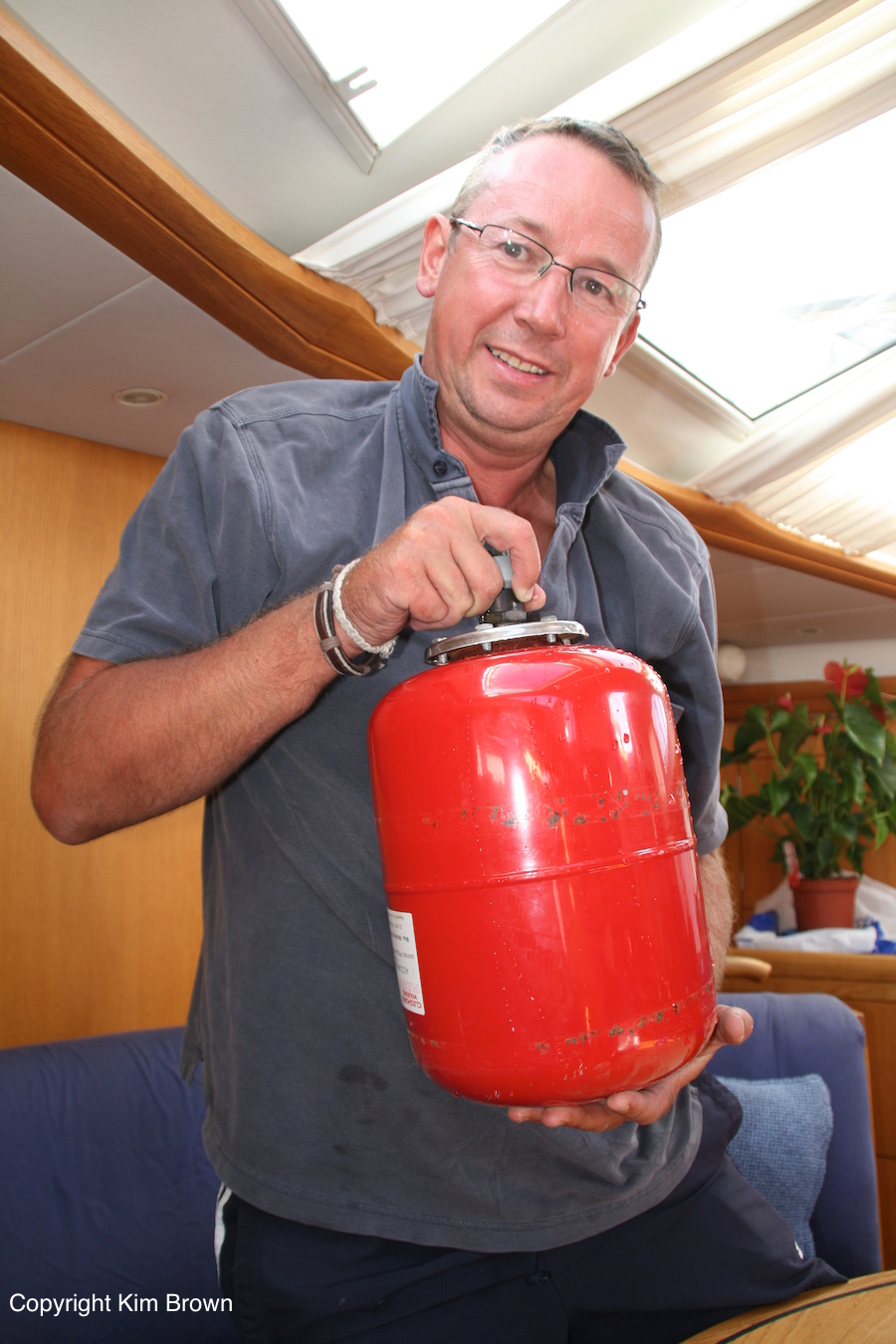
The whole issue was created from a broken accumulator tank
A what?
That’s what I said when our lovely friend, Andy Willett, from Stella Maris services, announced our problem.
Fortunate for me, Andy has a lot of patience and took the time to show me the accumulator tank, and explain how to verify that, indeed, the tank was faulty.
A accumulator tank is a part of any pressurized water system that includes a pressure-controlled pump
Many boats have them. The tank acts as a pressure buffer ensuring a smooth flow of water from all the outlets.
Inside the tank is a rubber membrane that expands and contracts ensuring that pressure stays the same if you’re, say, taking a shower and someone runs a tap. The tank also keeps pressure up so that you can run the tap quickly and the pump doesn’t go on. In fact, if your pump does go on every time you use the tap, that’s another indication that the accumulator could be faulty.
If the membrane becomes damaged the result is a sporadic fresh water pump activation – the not-so-sweet sound of brrrrrrrrrip
To diagnose the fault, all you need to do is find the accumulator tank – it will be near the discharge port of the pressurized water pump. Ours is a big red tank. On top there is a large screw top. Once you unscrew the top you’ll find something that looks like the air intake on a bicycle tire.
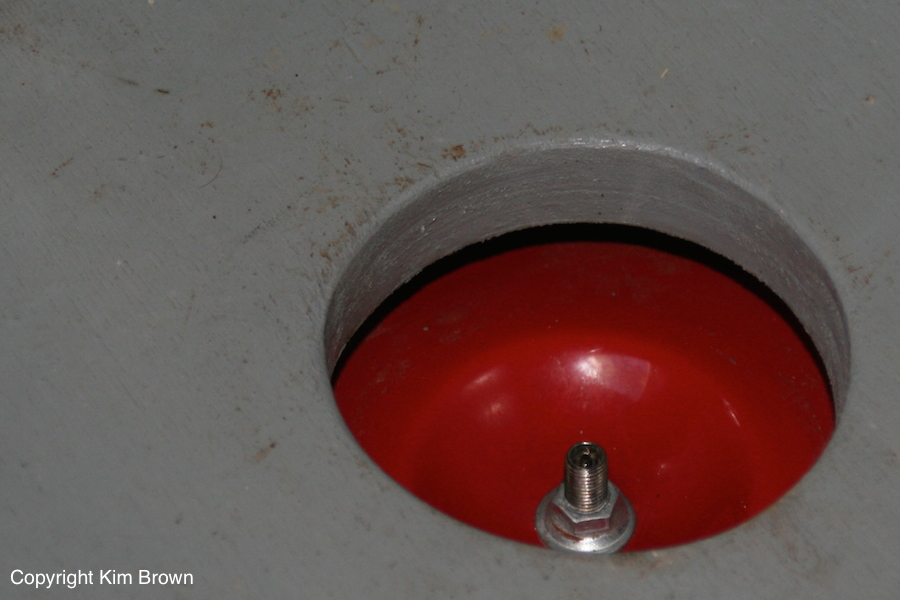
Accumulator fault-finding process
Place your thumbnail on the intake allowing air to escape. If water comes out you know your rubber membrane is busted and it’s time to exchange your accumulator.
So…fast-forward two days after our diagnosis and Andy arranged for a new accumulator tank to be delivered to us. We’re a very ‘hands-on’ boat – we need to learn how to fix things ourselves considering that a world circumnavigation is on the cards.
That being said, hubby rose to the challenge and started swapping the accumulators while Andy was still in our area. If we had a problem, we could at least yell, ‘help.’
We’re currently in Marina di Ragusa in Sicily. Andy and his team are based in the UK, but fly to the marina often to help their club members. (I highly recommend becoming a club member – these guys are always a phone call away and have already offered us priceless phone and personal support).
The steps to swapping a broken accumulator tank for a new one
Skill level: Basic (If we can do it – anyone can)
Tools: Flathead screw driver, adjustable wrench and a tire pump
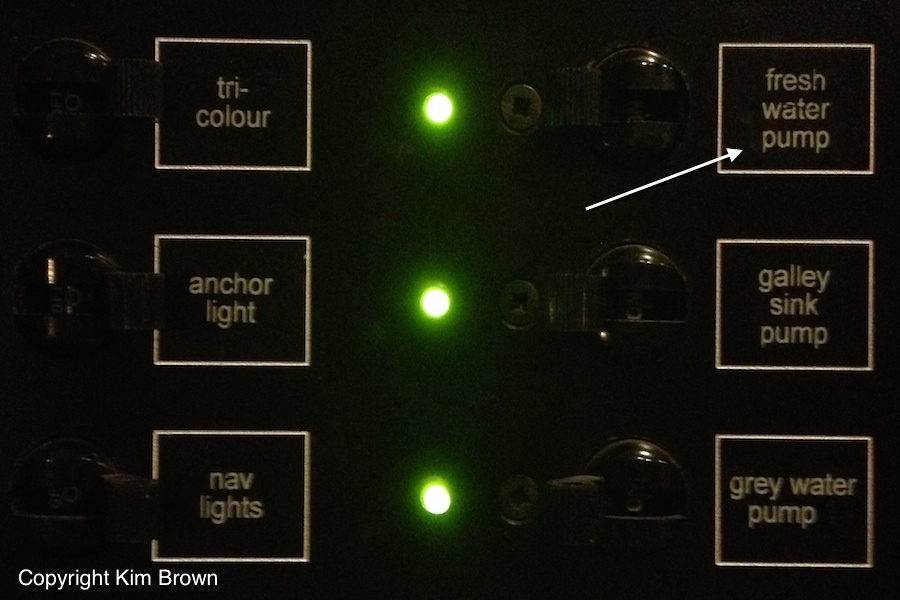
1. Turn off the fresh water pump on the circuit board.
2. Open a tap to run the water out.
(I’m sure you don’t need a picture for that task)
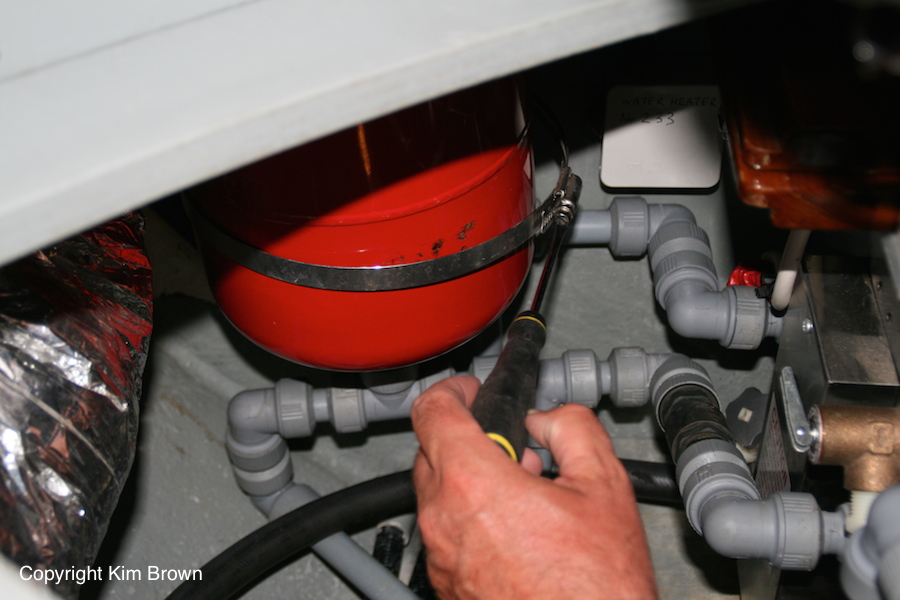
3. Remove the accumulator tank.
We had to remove two jubilee clips and then twist the tank off the pipe it was attached to. Also, I think that hubby took the accumulator off with a part of the pipework still attached to it. He removed that pipework and then attached it to the new accumulator. Note that it will be heavy as it’s full of water!
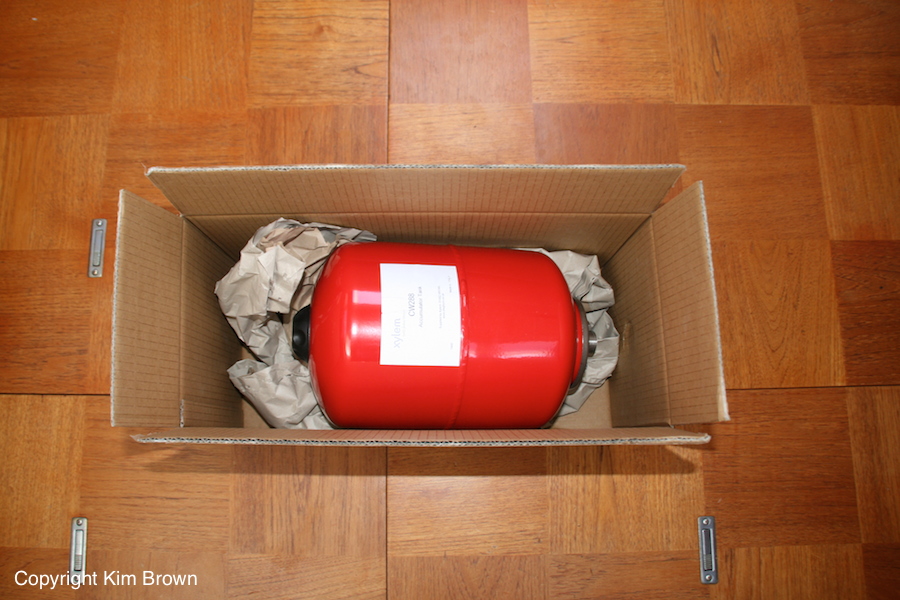
4. Grab the new accumulator tank and read the instructions!
Our instructions said that we had to let enough gas out to reduce the psi (whatever that is!) from 35 psi to 2 – 3 psi below the cut-in pressure. I think we worked it out that we needed to reduce to 7psi. We borrowed someone’s bicycle tire pump to do this.
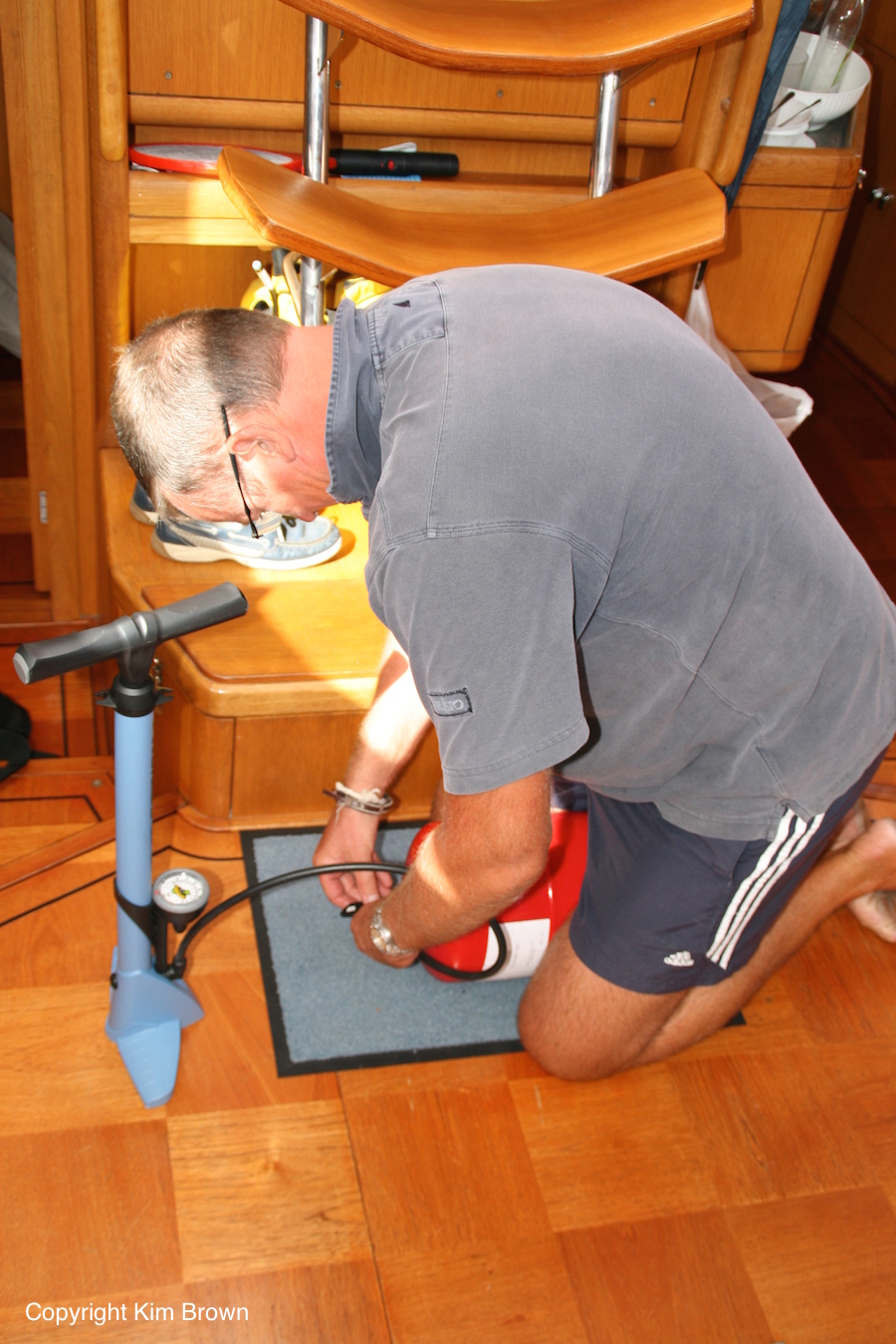
5. Put some sealant tape around the connection

6. Screw the new accumulator tank into the pipework and secure using whatever was there before
In our case, we had two metal bands with jubilee clips holding the tank fastened.
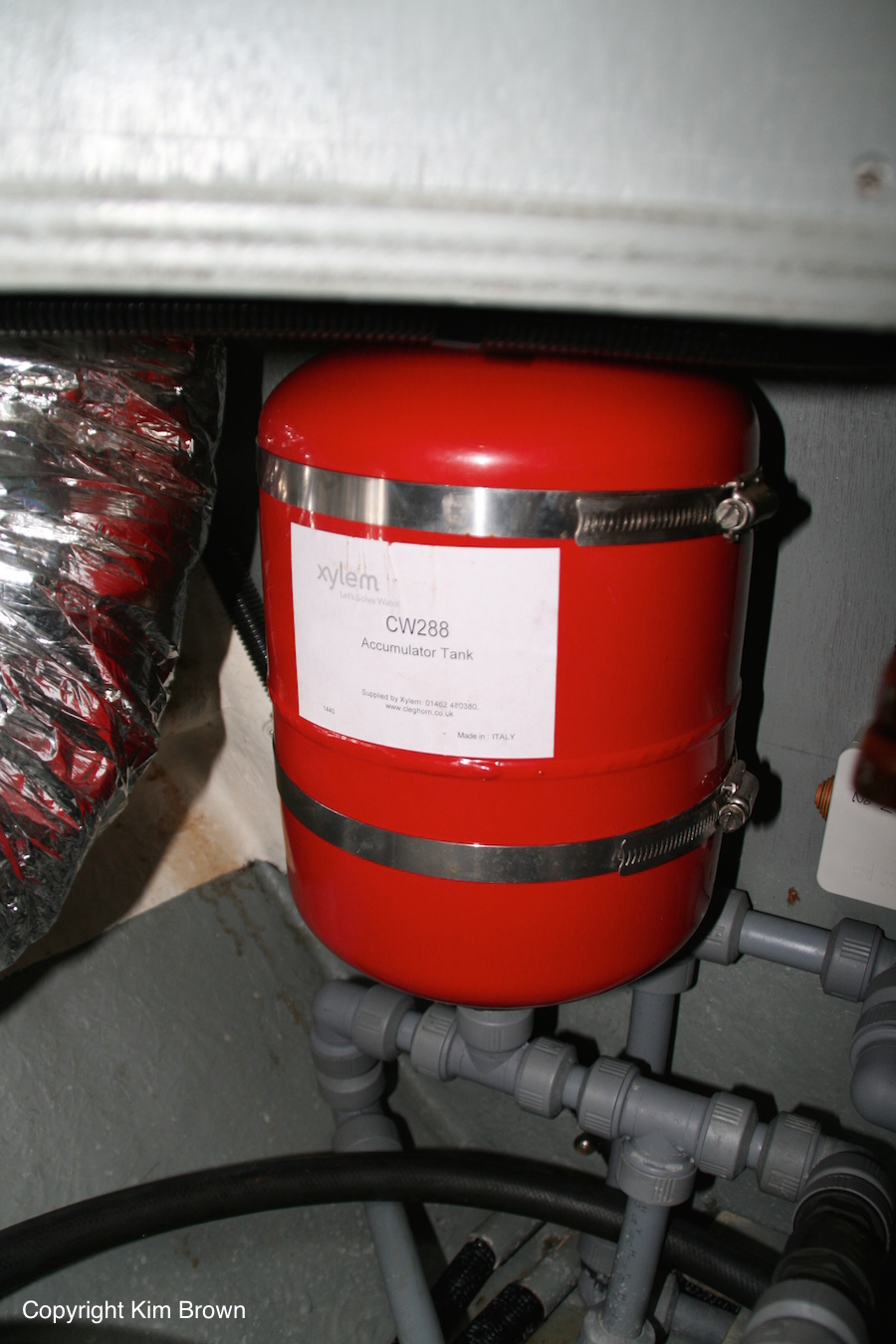
7. Turn the pump back on and listen…
When we turned our pump back on we heard the sweet sound of…..nothing. Fantastic!
The crazy thing about being a boatie or a ‘live aboard’ is that we’ll probably never have to change another accumulator tank. My hope is that by sharing this information I’m leveraging our learning experiences to help more than just us! That’s the hope 🙂 Also – a big thanks to Andy from Willett Marine (being renamed Stella Maris) for teaching us to fish rather than fishing for us!!!
Well I’m happy you solved your brrup problem. That would drive me nuts. Good and positive energy sent your way for rest of your trip!!
Thanks, helpful article. We have exactly the same problem on our narrow boat, brrrrrr! Drives me mad.
Ours was solved with an accumulator, but I think the bladder is puntured as after reading your article the bit about water coming out of air inlet rings true, brrrrrr!
Time to replace with a new one.
Well done.
Fair winds and good seas.
Thanks for this… helped me find my problem too. Mine probably hasn’t been checked in years by the previous owner! It had no pressure in it and when I added some, water came out. Researching accumulator tanks now.